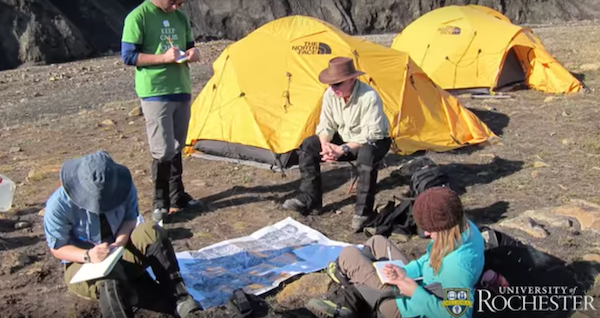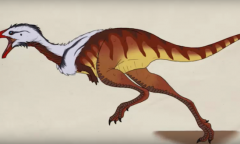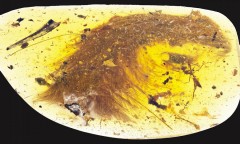By Vishal Goel, | December 28, 2016

The team of geologists discovered the new species of bird in the Canadian Arctic. (YouTube)
A team of geologists at the University of Rochester has discovered a new bird species in the Canadian Arctic after an analysis of ninety million years old fossils. The prehistoric bird, identified as Tingmiatornis arctica, is believed to provide evidence of an intense warming event during the Cretaceous period.
Like Us on Facebook
A team of geologists discovered a new species of bird in the Canadian Arctic. At approximately 90 million years old, the bird fossils are among the oldest avian records found in the northernmost latitude. They offer further evidence of an intense warming event during the late Cretaceous period.
Donald Brinkman, vertebrate paleontologist and director of preservation and research at the Royal Tyrrell Museum in Alberta, Canada, said that the fossils, which are among the oldest avian records found in the northernmost latitude, allowed the researchers to flesh out the community and add to their understanding of the community's composition and how it differed from other places in the world.
According to John Tarduno, professor and chair of the Department of Earth and Environmental Sciences at the University and leader of the expedition, the bird would have been a cross between a diving bird like a cormorant and a large seagull, but likely with teeth.
Tarduno and his team were able to conjecture from the fossil and sediment records that the bird's environment in the Canadian Arctic during the Turonian age would have been fresh with volcanic activity, a calm freshwater bay, temperature like in northern Florida, and creatures such as large freshwater fish, turtles and champsosaurs (crocodile-like reptiles which are now extinct).
The fossils were found above basalt lava fields which were created from a series of volcanic eruptions. This has led scientists to believe that volcanoes pumped carbon dioxide into the Earth's atmosphere, causing a greenhouse effect and a period of extraordinary polar heat, thus creating an ecosystem for large birds, including Tingmiatornis arctica, to thrive.
-
Use of Coronavirus Pandemic Drones Raises Privacy Concerns: Drones Spread Fear, Local Officials Say

-
Coronavirus Hampers The Delivery Of Lockheed Martin F-35 Stealth Fighters For 2020

-
Instagram Speeds Up Plans to Add Account Memorialization Feature Due to COVID-19 Deaths

-
NASA: Perseverance Plans to Bring 'Mars Rock' to Earth in 2031

-
600 Dead And 3,000 In The Hospital as Iranians Believed Drinking High-Concentrations of Alcohol Can Cure The Coronavirus

-
600 Dead And 3,000 In The Hospital as Iranians Believed Drinking High-Concentrations of Alcohol Can Cure The Coronavirus

-
COVID-19: Doctors, Nurses Use Virtual Reality to Learn New Skills in Treating Coronavirus Patients











